What’s a Ford Mustang GT without its engine? For today’s S550 ‘Stang, that means the Coyote. Let’s take a
look at this potent powerplant. We’ll explore the Coyote’s origins, its use in various Mustang models,
and how this engine has grown to take on its LS and Hemi competitors.
1980
1996
2011
2012
2015
2018
Stats
Let’s hop into the time machine and head back to 1980. Facing competitive pressures from Chevrolet and
Dodge, Ford realized it needs a new flagship powerplant. At the same time, the company was dealing with
stricter emissions standards from the federal government. With this challenge at hand, Ford engineers
researched V-8 designs from Europe and Japan in search of improved performance while keeping reliability
requirements in mind. Seven years and $4 billion later, Ford committed to its first modular V-8 engine, a single-overhead-cam
setup. Retooling the Romeo, Michigan engine plant began in 1987, and the first Ford product to receive
the all-new modular 4.6L engine was the 1991 Lincoln Town Car. Despite the new engine’s design allowing
for relatively easy reconfiguration into new powerplant variants, the “Modular” name really refers to
the factory’s ability to retool for the production of engine variants readily. 1996 was a pivotal year for the Mustang as Ford said bye-bye to the venerable pushrod small-block 5.0L
V-8 and welcomed an all-new top-end powerplant. GTs received a two-valve SOHC 4.6L modular V-8, and the
Cobra was powered with a four-valve DOHC version of the same engine. While some enthusiasts embraced the
change, skeptics mourned the loss of the iconic “5.0” moniker that traced its roots to the Fox Body
generation. Realizing the power and potential of the modular engine approach, many doubters came around.
Although, there are still pushrod fans out there. They’re called Chevy owners. OK, we're just kidding!
In 1997, a modular engine variant launched in the F-150 as the Triton V-8. This 5.4L engine embraced a
two-valve SOHC configuration. Through its SVT team, a hand-built four-valve DOHC version of the modular
5.4L would see its way into the 2000 SVT Cobra R and, eventually, the 2007 Shelby GT500. Ford even
offered a modular V-10 in the E-series van, F-250, and Excursion SUV. It’s easy to see that Ford was
committed to its modular engine undertaking, and at the very least, wanted to recoup its massive
research investment. The Coyote engine backstory continues into 2010 and the launch of the refreshed S197 Mustang. Curiously,
the Coyote didn’t see daylight until the following model year for 2011. There’s no official information
about the engine’s delay. You would think that a new Mustang would be the perfect opportunity to
introduce an all-new powerplant. It might have been that the engine just wasn’t ready yet or that Ford
marketers didn’t want the redesigned body to be overshadowed by a new engine. We may never know, but
later on, we’ll cover Ford’s better timing with Mustang and the Coyote. Interestingly, the Coyote name comes from the chassis that A.J. Foyt used during his Indy career. Ford
applied Coyote as a code name for the engine development project to keep suppliers and competitors in
the dark. With the Coyote engine, the release of the 2011 Mustang GT marks the return of the storied “5.0” tag.
Thanks to savvy Ford marketing and popular culture (looking at you, Vanilla Ice), the 5.0 term was just
another way of saying Mustang that dates back to the 80s. This new modular V-8 couldn’t have come at a better time. The resurrected Chevrolet Camaro and Dodge
Challenger were beginning to nip at the Mustang’s heels. In a 2009 Car and Driver comparo, a 2010
Mustang GT (with the modular 4.6L V-8) barely beats out a 2010 Camaro with a 6.2L LS3 and a 5.7L
Hemi-equipped 2009 Challenger. In developing the four-valve DOHC 5.0 Coyote, Ford was constrained by the earlier 4.6L and 5.4L modular
engines’ size. In other words, the Coyote had to fit into the engine bays of vehicles already built
around these older V-8s. At the same time. The Mustang GT had to be competitive, if not excelling, in
the horsepower wars. Engineers got creative by adding extra block support without thickening the walls
and keeping the intake plenum low. A cast aluminum block and cylinder head helped with the weight. Arguably, the Coyote’s most important feature is the twin independent variable cam timing (Ti-VCT in Ford
speak) and its ability to control the opening time of the intake and exhaust valves. This technology
provided Ford with a winning trifecta: more power, improved fuel economy, and reduced emissions.
Replacing the 5.4L Triton, the F-150 received its own version of the Coyote focused less on horsepower
and more on low-end grunt. 2011 Mustang GTs rolled out of the showroom with 412 hp and 390 lb-ft of torque. For 2012, the GT
continued as-is. However, Ford released the Mustang Boss 302 slotted above the GT and featuring an
upgraded Coyote engine, coined the “Road Runner.” Using an improved intake, lightened valvetrain, and
new heads, the naturally-aspirated Boss 302 Coyote variant pushed out 444 horsepower and 380 lb-ft of
torque. This Mustang included an enhanced suspension with higher-rate coil springs and a bigger rear
stabilizer bar. The Boss carried over for 2013 while the GT received an 8 hp power bump to 420
horsepower. For 2014, Ford dropped the Boss, and the GT remained the only Coyote-powered Mustang. Perhaps learning its lesson from the mistimed launch of the S197 Mustang and the Gen 1 Coyote, Ford’s
release of the all-new S550 Mustang coincides with the debut of the reworked Gen 2 Coyote engine. The Gen 2’s major change was the addition of charge motion control valves (CMCV) with the intake
manifold. More advanced than previous Ford CMCV systems, the new setup offered a better air-to-fuel
mixture allowing for more stable idle control, improved fuel economy, and lower emissions. For
2015-2017, the GT was the only Coyote-based Mustang and enjoyed an output boost to 435 hp and 400 lb-ft
of torque. For 2018, Ford introduced the Gen 3 Coyote engine, which reflected several changes. A new high-pressure
direct-injection system combined with the existing low-pressure port injection increased compression and
performance. Ford engineers also increased the Coyote’s bore diameter while introducing Plasma
Transferred Wire Arc cylinder walls instead of steel sleeves. Other changes included reworked and more
robust cylinder heads that helped with airflow. The somewhat lighter weight Gen 3 engine, along with the new architecture, could now produce 460 hp and
420 lb-ft of torque in GT form. This is the output for all Mustang GTs produced since 2018. Taking a
page from its nostalgia playbook, Ford reintroduced the special edition Bullitt for 2019-2020. Thanks to
a performance exhaust system, intake manifold, and throttle body from the Shelby GT350, and other
improvements, the Coyote-powered Bullitt enjoyed 480 hp and 420 lb-ft of torque. The Bullitt could hit a
top speed of 163 mph: five more than the GT. And, today, we see that same Bullitt powerplant under the
hood of the 2021 Mustang Mach 1.History of the Coyote Engine
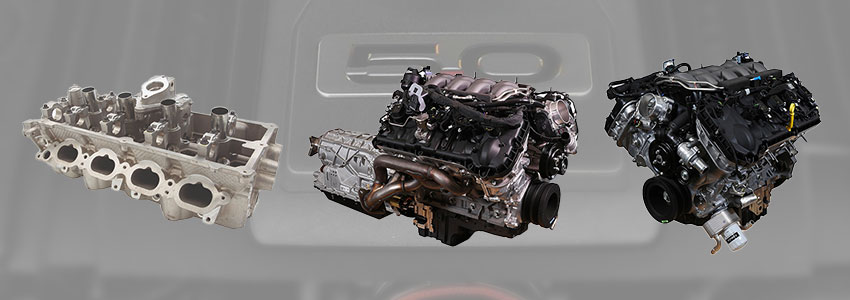
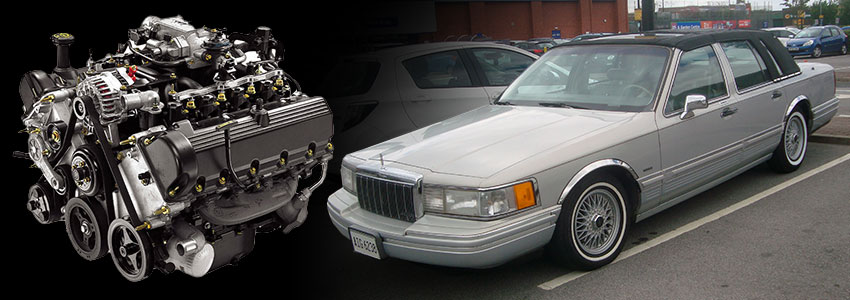
1980: The Coyote Engine Began (Technically)
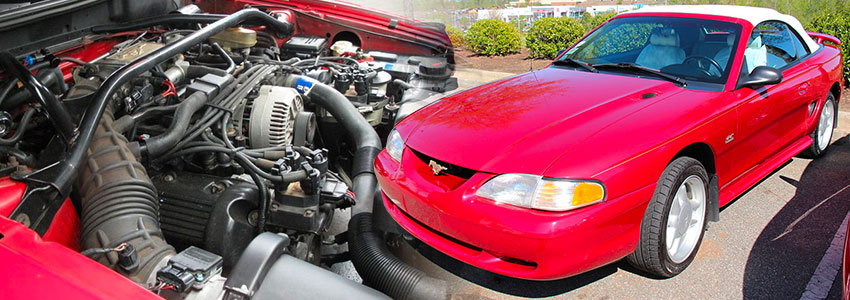
1996: Ford Mustang Receives First Modular Engine
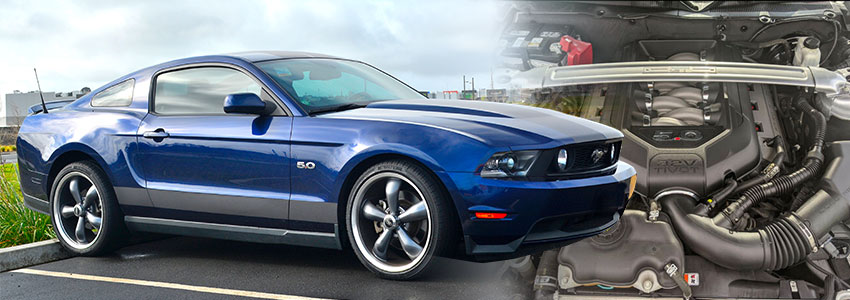
2011: Launch of Gen 1 Coyote Engine
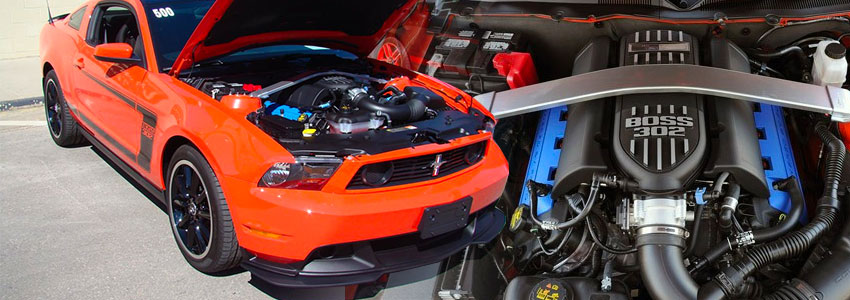
2012: Coyote 5.0 Gets Beefed Up: Boss 302

2015: Better Timing With The Gen 2 Coyote Mustang Engine
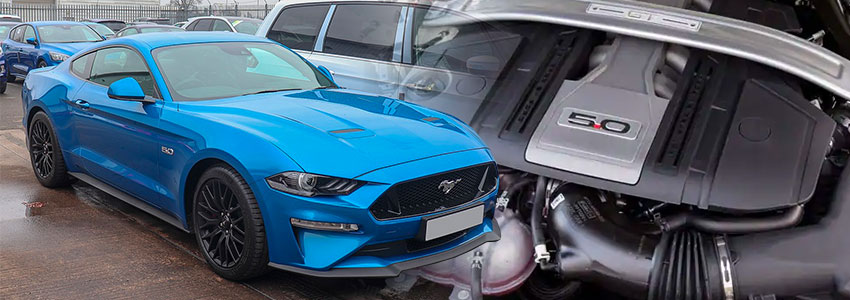
2018: Mustang Gets Gen 3 Ford Coyote
Ford Coyote Engine Stats
Year
GT
Special Edition
Gen 1
2011-2012
412 hp / 390 lb-ft
2012-2013
Boss 302: 440 hp / 380 lb-ft
2013-2014
420 hp / 390 lb-ft
Gen 2
2015-2017
435 hp / 400 lb-ft
Gen 3
2018-2021
460 hp / 420 lb-ft
2019-2020
Bullitt: 480 hp / 420 lb-ft
2021-
Mach 1: 480 hp / 420 lb-ft
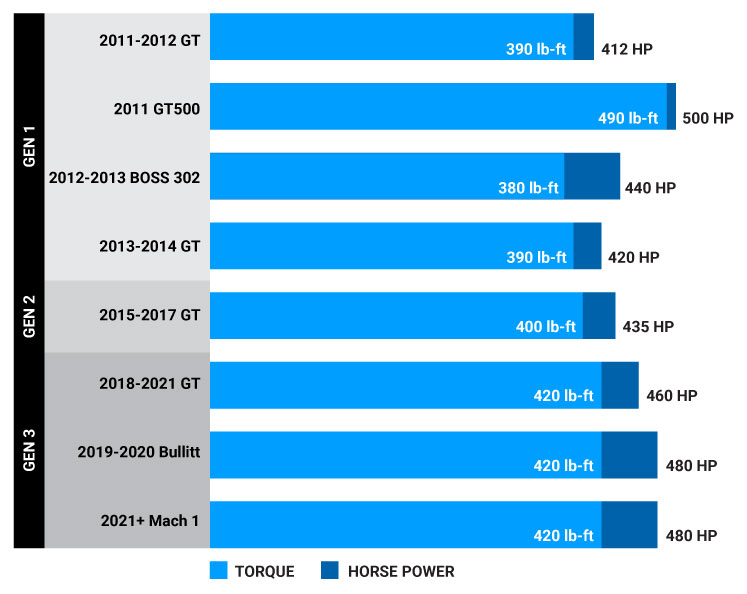
Related Articles




